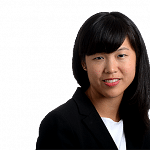There has been no let-up in Singapore companies buying into properties Down Under this year.
In one of the latest deals, there could be a Fragrance or Parc Sovereign hotel in Perth's central business district. Global Premium Hotels said earlier this month it is paying A$23.85 million (S$24 million) for the site which could be redeveloped into a hotel. In the first nine months of this year, Singapore firms spent US$2.576 billion (S$3.57 billion) on 54 Australian properties, well up from US$1.396 billion (S$1.92 billion) and 46 properties in the same period last year, according to data compiled by Savills Research.
Several reasons are behind this: Cooling measures here have diverted capital to other faster growing markets; the fall of the Australian dollar against the Singdollar, which started in September last year; and the transparency of Australia's market. But really, Singapore interest in Australian assets stems as far back as the early 1990s, said Mr Raymond Clement, managing director of Savills Hotels, Asia-Pacific.
"(This was) when Australia had the recession it 'had to have' - to quote then Treasurer Paul Keating - resulting in a transition of assets predominantly held by Japanese conglomerates to Singaporean interests."
For Singapore firms buying into the Australian property market so far this year, their interest has been strongest in hotels with about US$861 million spent, followed by US$681 million on industrial property and US$544 million on offices.
In the hotel sector, a joint venture between Sino Land and Far East Organization paid US$344.1 million for the Westin Hotel in Sydney. "Full-service upscale hotels definitely draw Singapore investors... (partly) due to the exposure to luxury hotels in Singapore," said Mr Clement.
Australian hotels also achieved record market performance, a Savills report for the first half of the year shows. Across Australia, average daily rates rose 2.1 per cent in the first seven months of this year to A$180.87 while revenue per available room (RevPar) rose 3.7 per cent to A$134.64. Standout performers were Sydney and Melbourne which enjoyed 7.4 per cent and 4.5 per cent growth in RevPar, respectively.
"International tourism from China, India and Asia has been increasing with the rise of the middle class in these countries, and a weaker Australian dollar making overseas travel cheaper," said Mr Clement.
As for offices, Singaporean investors are attracted by the relatively high yield in Australia, said Mr Alan Cheong, senior director of research and consultancy at Savills Singapore. "This is because Australian interest rates are comparatively higher than those here, which then prop up real estate rental yields." For example, office market yields at June were 6.5 per cent in Sydney, versus 4.39 per cent in Singapore. But once taxes, rental incentives and operating expenses are accounted for, Australia's advantage is greatly reduced. Effective risk premium, or the expected return for risk, was calculated as 1.1 per cent in Sydney and 1.01 per cent in Singapore.
As a whole, foreign real estate investment into Australia has been on the rise. Approved proposed foreign investment in the sector rose 44 per cent to A$74.6 billion for the year ended June 30 last year, according to the latest annual report by Australia's Foreign Investment Review Board. Singapore was the third largest country of origin for approved proposed real estate investment for the period, after China and the United States.
One such Singapore investor is Roxy Pacific Holdings, which earlier this year acquired three development sites in Brisbane and Perth in joint ventures. Australia is now one of the key markets it is focusing on, and it looks for assets with a 6.5 per cent net yield with upside potential or development projects with internal rate of return of at least 20 per cent.
"For development projects, we have the strength of funding and also application of ideas from our Singapore experience to sell to local and Asian buyers," said Mr Teo Hong Lim, its executive chairman and chief executive officer.
However, not all developers are on board. Some note that in Australia, a lot of cash is required upfront before any returns are seen, as most of the payment only comes when the development is completed.
This is unlike Singapore, where the progress payment scheme as part of the sale and purchase agreement means that as each project stage is reached, a developer is paid for the portion completed.
"In the property development industry where land price is high, cash is king. Some developers find the Australian system a bit riskier as cash is not coming in at a consistent rate like in Singapore," said Ms Jennifer Chia, executive director of TSMP Law Corporation.

